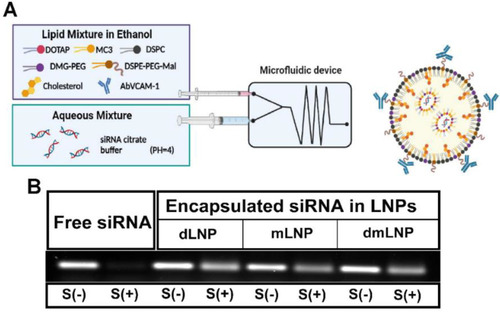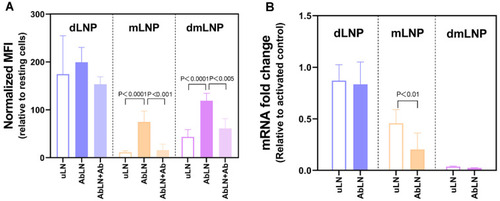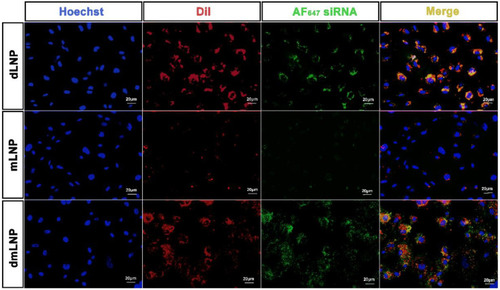- Title
-
Development of a Combined Lipid-Based Nanoparticle Formulation for Enhanced siRNA Delivery to Vascular Endothelial Cells
- Authors
- He, Y., Bi, D., Plantinga, J.A., Molema, G., Bussmann, J., Kamps, J.A.A.M.
- Source
- Full text @ Pharmaceutics
|
Preparation and characterization of LNP with different cationic lipid compositions. ( |
|
Endothelial association and transfection activities of three LNP formulations with different cationic lipid compositions. ( |
|
Effect of the DOTAP/MC3 ratios in dmLNP formulations on cell association and transfection in activated HUVEC. ( |
|
Intracellular release of siRNA from dLNP, mLNP and dmLNP (10D/40M) in EC. HUVEC were incubated for 6 h with three LNP formulations labeled with DiI (red) and loaded with AlexaFluo647-siRNA (green), the nuclei were stained using Hoechst 33,342 (blue). Presented datasets are representative fluorescence microscopy images of 2 independent experiments. Scale bar: 20 µm. |
|
Ab-dmLNP/siRNARelA attenuates endothelial inflammatory activation after down-regulation of NF-κB P65 (RelA), which is as effective as lipofectamine. ( |
|
Biodistribution of LNP and siRNA in zebrafish embryos at tissue-level view. ( |
|
Effective in vivo GFP silencing mediated by the DOTAP/MC3 LNP/siRNA system (10D/40M) in Tg ( |







